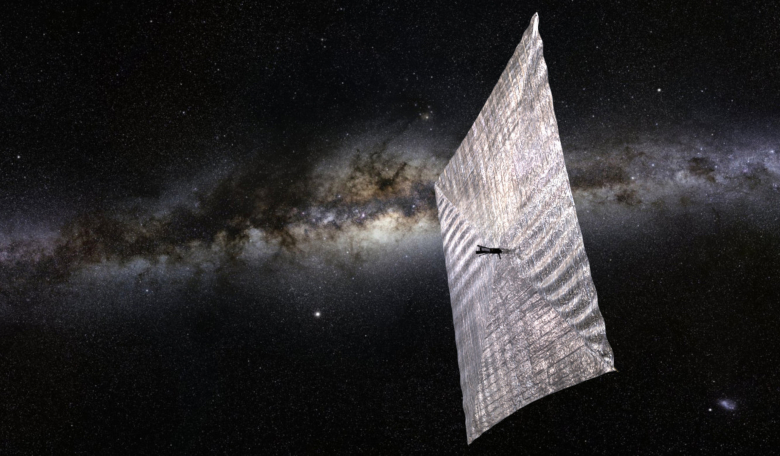Yesterday, engineers in the US pressed a button that unfurled huge, and incredibly thin silver sails attached to a satellite that is now whizzing around Earth powered by nothing more than the energy of the sun.
This small shoe-box-sized cubeSat that now extends to the size of a boxing ring is the Planetary Society’s pet project LightSail 2, which was lofted 1157 kilometres (720 miles) into space just under a month ago.
Telemetry from the CubeSat indicated that at approximately 11:45 p.m PDT (18:45 GMT) on 23 July, a small motor began deploying the mission's (32-square-metre (344-square-foot) solar sail. By the third LightSail 2 ground station pass of the day at 2.00 p.m PDT, deployment was complete and flight controllers successfully commanded the spacecraft into solar sailing mode.
"We're very excited to be past this huge milestone," Jennifer Vaughn, Chief Operating Officer at The Planetary Society said during a livestream of the deployment from the spacecraft's control centre in California. "We now have a sail. It's time to go sailing! … We now start the very difficult process of sailing in space."
The goal of LightSail 2 is to raise its orbit by a measurable amount, and show that sails of this nature are a viable means of propulsion for CubeSats - an idea that is documented as far back as the 1600s by German astronomer Johannes Kepler, who is renowned for his work on describing the laws of the planets’ orbits.
How will the CubeSat stack up against its mission objectives?
By the fourth and final LightSail 2 ground station pass of the day, completed around 3.30 p.m PDT (22.30 GMT) the spacecraft had finished one orbit in solar sailing mode, and all of its major systems were reporting nominally.
“A preliminary look at attitude control system data showed the solar sail was angled to within 30 degrees of its expected orientation—a promising early sign the spacecraft is tracking the Sun properly,” The Planetary Society shared via its website.
However the society also reported that, “LightSail 2 did not rise far above the horizon, and communications performance with the spacecraft was lower than previous passes, possibly due to the orientation of the spacecraft during the pass and the presence of the newly deployed solar sail. The team was not able to download image thumbnails and will try again tomorrow.”
Still, it’s early days and a successful demonstration, no matter how short, will be beneficial in helping to spur on advances in this type of technology; advances that 40 years ago would have been advantageous for two pioneering spacecraft currently speeding their way beyond the heliosphere, by nothing more than momentum; NASA’s twin Voyager spacecraft. Their historic journey has so far taken 40 years - a trip that could have taken half the time if they had been fitted with solar sails.
Also cruising through space right now, perhaps, is the Japanese space agency’s experimental solar ‘Yacht’ called Ikaros. Launched in 2010, the craft was able to travel past Venus via nothing more than the momentum gained from the massless light particles (photons) bombarding the sail, which stream constantly from the Sun.
The probe had no steering mechanism though and was last heard from in 2015, somewhere in the vicinity of the Sun. And LightSail 2 will not be the last of its kind as NASA plans to launch its Near Earth Asteroid Scout early in the next decade. It too will employ the use of a solar sail to visit and study a nearby asteroid.











